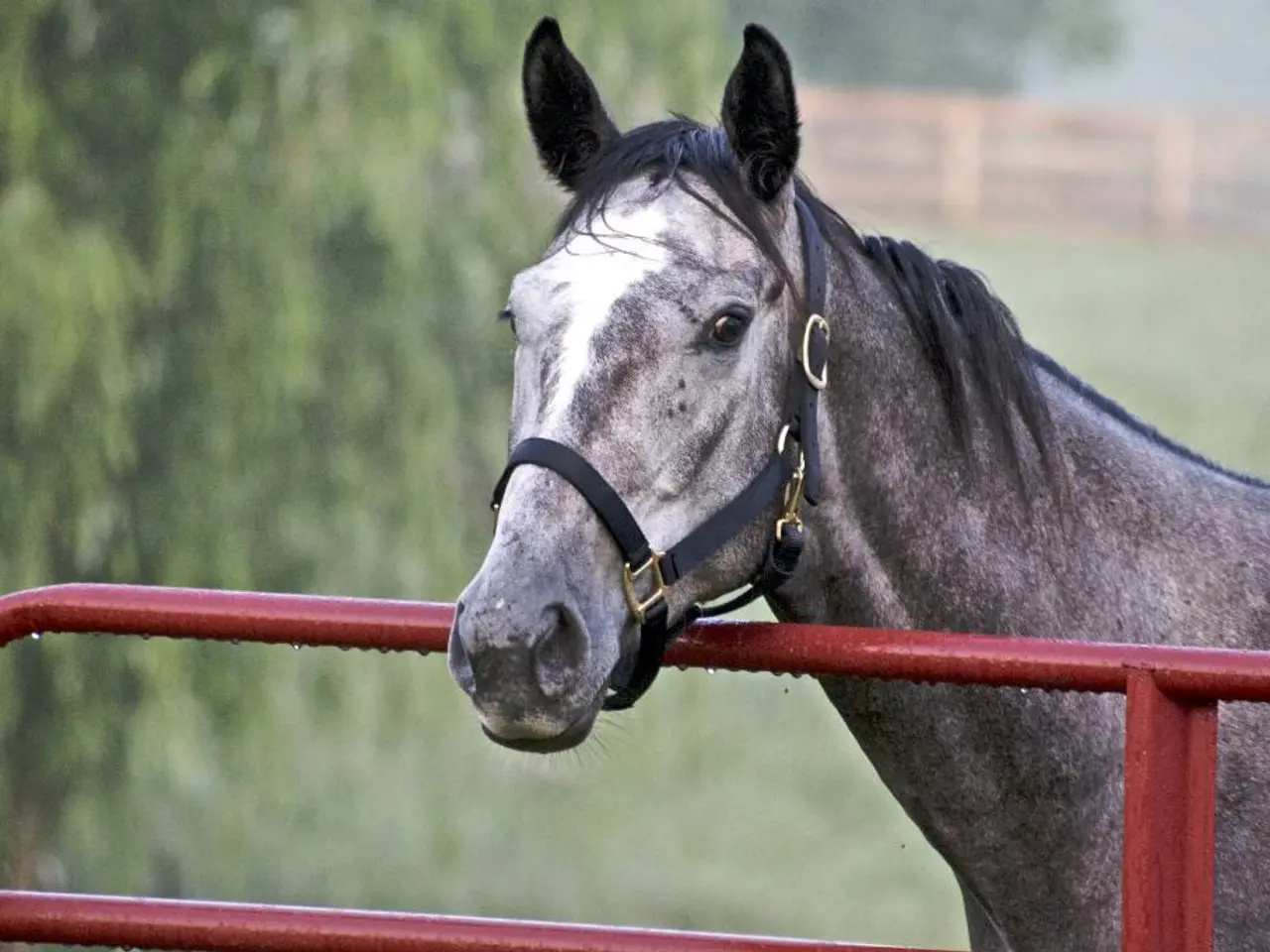Saving the British Countryside with Native Livestock Breeds: A Gigantic Task Ahead
In the vast and diverse landscapes of the United Kingdom, a new approach to conservation is taking root. The use of native British livestock breeds for conservation grazing is gaining popularity, offering a sustainable and ecologically sound solution to managing the country's diverse habitats.
Dexter ponies, the smallest of all native ponies, are found grazing in delicate ecologies such as Rutland Water. Exmoor ponies, with their double winter coat and small hooves that minimally poach ground, are popular choices for conservation grazing due to their intelligence and adaptability. These ponies can be found in various landscapes, from wetland habitats to clifftops, and even hundreds of miles from their homeland in places like Exmoor, the Quantocks, and Snowdonia.
Britain's native cattle breeds, including longhorns, Red Devons, White Parks, and Lincoln Reds, are also key players in conservation grazing. Over 100 conservation projects across the UK utilize these breeds for grazing, particularly in areas overtaken by bracken and brambles. The Rare Breeds Survival Trust (RBST) argues that pigs are an excellent alternative to herbicides and machinery in curbing rhododendron takeover.
Goats, more selective and agile than sheep, are also integral to conservation grazing. Bristol City Council has a small herd of goats managing the land and keeping views clear around the Purdown Gun Battery in Stoke Park. The rarer, smaller, more primitive types of sheep, such as Hebridean sheep, are being used to create 'wigeon lawns' for winter bird feeding.
The benefits of using native British livestock breeds for conservation grazing are numerous. Adaptation to local environments is a key advantage, as these breeds have evolved over centuries to thrive in Britain’s diverse landscapes. They help maintain characteristic vegetation structures that support native wildlife, such as insects, birds, and other fauna.
Native breeds also support conservation of biodiversity and traditional landscapes. For example, British native cattle breeds help clear awkward terrain unsuitable for machinery, promoting habitats for insects, birds, and other fauna. Similarly, native sheep breeds contribute to maintaining open swards that benefit ground-nesting birds.
Native livestock breeds also manage vegetation specifically adapted to local conditions, such as wet ground or steep rocky hillsides. Their grazing patterns support a rich invertebrate community, providing food for birds, while reducing dominant grasses, enhancing biodiversity.
Preservation of genetic diversity and rare breeds is another significant benefit. Many native breeds are rare or ancient, such as Bagot and British Primitive goats or Manx Loaghtan sheep, contributing to agricultural heritage and genetic diversity. They can be attractive and manage vegetation in a way that supports conservation goals while also drawing public interest.
Native breeds tend to be hardy, requiring fewer interventions such as parasite control with chemicals. This approach supports a more natural and ecologically friendly grazing system, which aligns better with conservation objectives and reduces chemical impacts.
In contrast, imported breeds may lack the specific adaptations needed for localized ecological management, potentially leading to overgrazing, habitat damage, or less effective support for native wildlife due to differences in grazing behavior, diet preferences, or resilience.
In summary, native British livestock breeds are preferred for conservation grazing because they are ecologically adapted, support biodiversity, require fewer chemical interventions, and help preserve traditional farming and genetic heritage, making them better suited for long-term sustainable habitat management in the UK.
Landowners have the right to keep any livestock they wish, and British breeds have been exported for grazing on nature reserves, such as Exmoor ponies to the Czech Republic. The rewilding concept, featuring the introduction of exotic animals like moose in Scotland, has gained popularity a couple of decades ago. However, the use of native British livestock in conservation grazing offers a more sustainable and culturally appropriate approach to managing the UK's diverse habitats.
- In the realm of conservation projects, native British livestock breeds also extend their influence in the fashion-and-beauty sector, with their unique characteristics paving the way for emerging trends in pet grazing.
- When it comes to lifestyle, one can make a statement by choosing eco-friendly food-and-drink options that support local agriculture, such as organic milk from Dexter ponies or meat from Red Devon cattle.
- For home-and-garden enthusiasts, investing in homegrown vegetables tended to by Hebridean sheep or goats contributes to a sustainable lifestyle while adding an authentic touch to one's yard.
- In the realm of relationships, shared interests in conservation projects, like exotic travel destinations for spotting moose or attending car shows featuring vintage Red Devon cattle drawing, provide opportunities for engaging, enriching experiences.
- While out shopping for groceries, consider products that support the conservation of British wildlife, from locally produced food-and-drink to organic pet food featuring native British livestock breeds.




